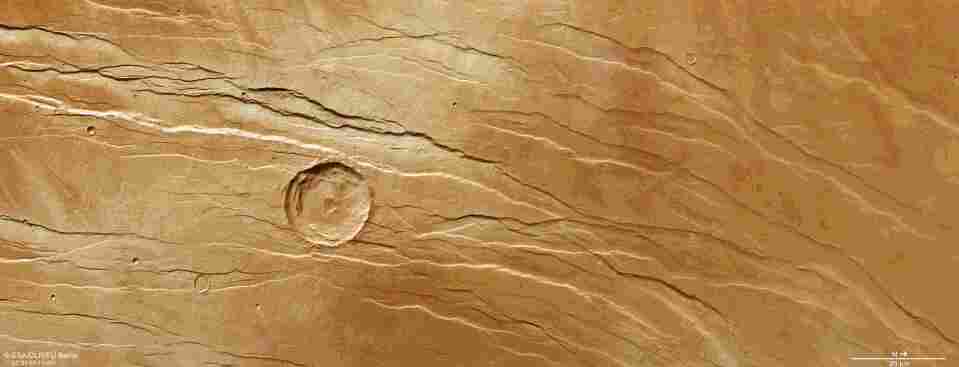Technology
Giant ‘claw marks’ on Mars spotted by European spacecraft – but there’s a simple explanation

STRANGE patterns spotted on the surface of Mars look like claw marks left by a cosmic kitty.
The crisscrossing grooves were captured by the European Space Agency’s Mars Express orbiter and recently shared online.
An orbiting European spacecraft captured this image of Mars’ Tantalus Fossae
They’ve been compared to scratch marks and are part of a huge fault system on Mars known as Tantalus Fossae.
While they may look as though they were left by a giant beast, the explanation for the ditches is far simpler.
They’re the result of natural geological processes that occurred during the emergence of a nearby volcano.
“At first glance, these features look as if someone has raked their fingernails across the surface of the Red Planet,” ESA wrote in an April 28 blog post about the image.
Read more about space
“While not quite so dramatic in its formation, Tantalus Fossae is a noticeable feature on Mars.”
The system of troughs runs along the eastern edge of a Martian volcano named Alba Mons, the space agency said.
The fossae – a term meaning shallow depression – were created as the summit of Alba Mons rose in elevation.
That caused the surrounding surface to warp and break, leaving behind a series of trenches in its wake.
Most read in News Tech
The ditches stretch 1,000 km in length and are up to 350 metres deep.
“The same features can be found on the western side of Alba Mons, forming an incomplete ring around the volcano,” ESA said.
The Mars Express orbiter launched in 2003 and was Europe’s first mission to the Red Planet.
It uses an array of cameras to study the Martian atmosphere and climate as well as to search for traces of water.
ESA was poised to send its first rover to Mars this year but has pushed the launch date back to 2026 at the earliest following Russia’s invasion of Ukraine.
The agency’s Jorge Vago revealed last week that it was struggling to get the ExoMars mission back on track after ending its cooperation with Russia.
Read More on The Sun
ESA announced in March that it would be impossible to continue working with Russia, which was providing the launch vehicle and landing platform for the mission.
There are currently four spacecraft on the Martian surface, three of which are operated by Nasa and one by China’s space agency.
Get all the latest Science newsKeep up-to-date with the top Space & Astronomy storiesAll the latest Archaelogy news from dinosaurs to Ancient artefacts
We pay for your stories! Do you have a story for The Sun Online Tech & Science team? Email us at tech@the-sun.co.uk

